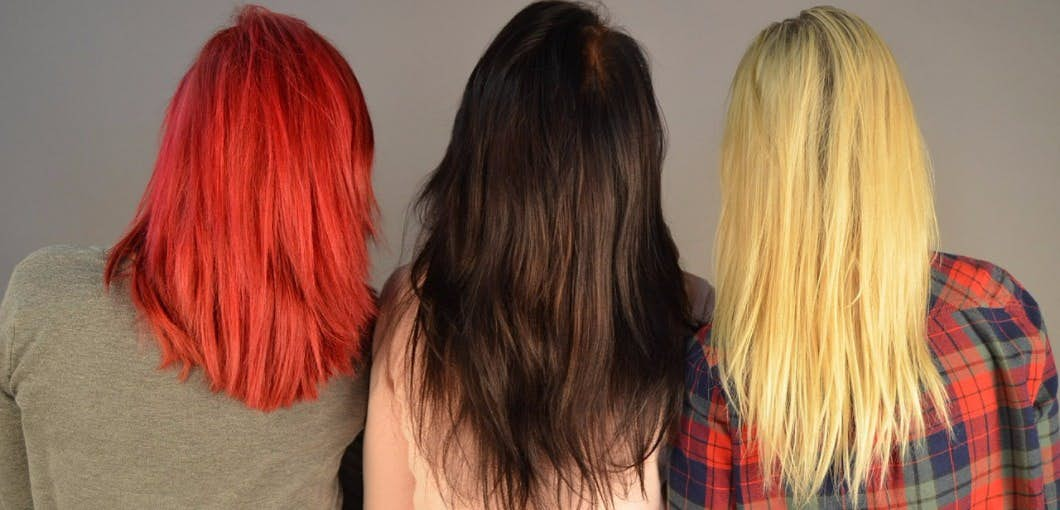
A good idea? The short answer is "No," but it's important to understand that some types of dyes are more hazardous than others. . .
You might want to pause before you buy a color treatment to touch up your roots or change your look…
A report from the American Cancer Society says studies associate the use of hair dye with an increased risk for developing cancers of the bladder, blood and breast.
And while many of these lab tests involved animals, there are other studies that examine human exposure to hair dyes as well.
In a report printed in the Jan. 15, 2004 edition of the American Journal of Epidemiology, Yale University researcher Tongzhang Zheng, Sc.D, led a research team that analyzed hair dye use in 601 women with non-Hodgkin's lymphoma. They compared these results to research on 717 similar women who were cancer-free.
Here's a snapshot of what they found:
- Women who used hair coloring products before 1980 demonstrated an increased risk of non-Hodgkin's lymphoma.
- Use of dark-colored permanent hair colors for more than 25 years doubled the risk for some types of non-Hodgkin's lymphoma.
- The risk for this disease also nearly doubled for women who used more than 200 applications of these products.
- Semi-permanent dyes or temporary rinses did not appear to carry the same cancer risk.
Before this point, hair dyes contained many chemicals that were shown to cause cancer in animals. This was especially true with darker dyes, which tended to contain higher concentrations of these potential carcinogens.
Dye manufacturers have removed many of these toxins from the hair coloring agents used today.
But here's the catch: Not ALL of these toxic chemicals have been removed. And not all hair coloring products contain the same types of chemicals and pigments.
All dyes are NOT created equal!
Dyeing your hair brings your skin into contact with the chemicals and pigments that make up the product. Although the chemical content of hair dyes varies widely, products can generally be grouped into three main types:- Temporary hair dyes—these products are designed to cover the hair surface without penetrating the hair shaft; they typically last for 1 to 2 washings
- Semi-permanent hair dyes—these dyes temporarily penetrate into the hair shaft and will last for about 5 to 10 washings
- Permanent hair dyes—these coloring products cause longer lasting changes to your hair shaft; they typically last until new growth emerges and tend to contain higher concentrations of chemical coloring agents
Once these chemicals penetrate the skin, they can stay for weeks, months or even years after your hair is dyed.
A major problem with amine compounds is their ability to react with pollutants such as tobacco smoke and exhaust fumes to form highly poisonous chemicals called N-nitrosamines.
The National Institutes of Health, National Toxicology programs lists the compounds as known carcinogens that are banned from use in cosmetics. But they can still form on their own from the amine chemicals in hair dyes.
Just think about the dilemma this might pose for all the barbers and hairdressers in the world!
Unfortunately, some studies examining people exposed to hair dyes at work have found a small but consistent increase in the risk of bladder cancer.
The good news is… such studies have not associated that increased risk with the people whose hair is dyed. It's mainly the beautician who's at risk.
Now you can probably guess that the cosmetics industry has downplayed the significance of any and all studies associating hair dye with cancer risk. They even managed to convince the Food and Drug Administration (FDA) that warning labels about cancer risk were completely unnecessary for products containing the chemical 4-MMP.
According to an FDA statement, a regulation requiring the following warning was to become effective April 16, 1980:
Warning — Contains an ingredient that can penetrate your skin and has been determined to cause cancer in laboratory animals.Some hair dye manufacturers instituted legal challenges to the regulation. They said the cancer risk was too small to be considered "material."
As a result, the agency reconsidered its earlier position… entered into a consent agreement with hair dye manufacturers… and postponed the effective date of the regulation until an appropriate risk assessment study could be completed.
You can color without cancer risk!
There are several ways to refresh your color—or achieve other hair colors—without using chemical-laden dyes.Remember, temporary dyes may not last as long… but they don't contain the potentially harmful chemicals in permanent dyes.
You could also consider plant-based dyes such as henna products. There are different pigments that can be blended to achieve the color results you want—minus the chemical risks.
Whether or not to use chemical dyes to color your hair is a personal choice. But make sure you weigh the risks and benefits to see whether your choice is worth 'dyeing' for!
 Lee Euler, Publisher
Lee Euler, PublisherResources: American Cancer Society. 2011. Hair dyes and cancer factsheet. Available online athttp://www.cancer.org/cancer/cancercauses/othercarcinogens
/intheworkplace/hair-dyesDeNoon, D. 2004. Hair dye linked to blood cancer. WebMD article available online athttp://www.webmd.com/healthy-beauty/news/20040126/hair-dye-
linked-to-blood-cancerFood and Drug Administration. 2012. Hair dye products factsheet. Available online athttp://www.fda.gov/Cosmetics/ProductandIngredientSafety/
ProductInformation/ucm143066.htmNational Cancer Institute. 2011. Hair dyes and cancer risk factsheet. Available online athttp://www.cancer.gov/cancertopics/factsheet/Risk/hair-dyesU.S. Department of Health and Human Services. 2011. Report on Carcinogens. Report available athttp://ntp.niehs.nih.gov/ntp/roc/twelfth/roc12.pdf
/intheworkplace/hair-dyesDeNoon, D. 2004. Hair dye linked to blood cancer. WebMD article available online athttp://www.webmd.com/healthy-beauty/news/20040126/hair-dye-
linked-to-blood-cancerFood and Drug Administration. 2012. Hair dye products factsheet. Available online athttp://www.fda.gov/Cosmetics/ProductandIngredientSafety/
ProductInformation/ucm143066.htmNational Cancer Institute. 2011. Hair dyes and cancer risk factsheet. Available online athttp://www.cancer.gov/cancertopics/factsheet/Risk/hair-dyesU.S. Department of Health and Human Services. 2011. Report on Carcinogens. Report available athttp://ntp.niehs.nih.gov/ntp/roc/twelfth/roc12.pdf


